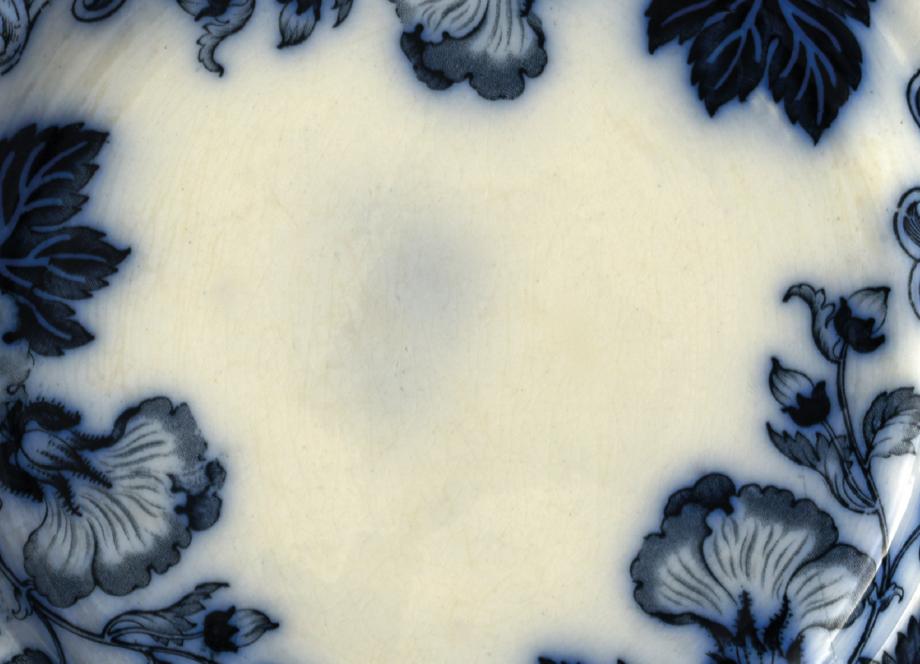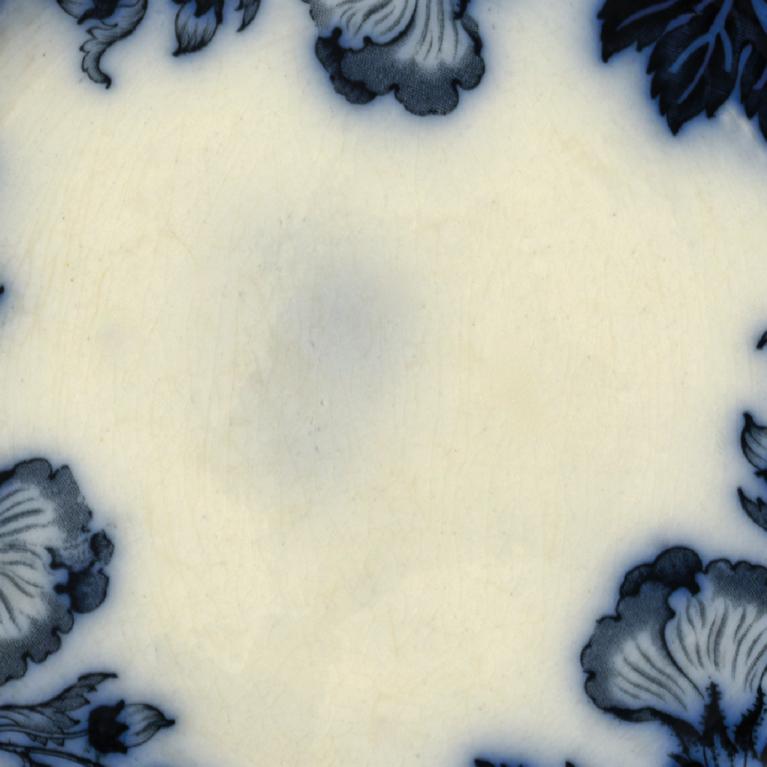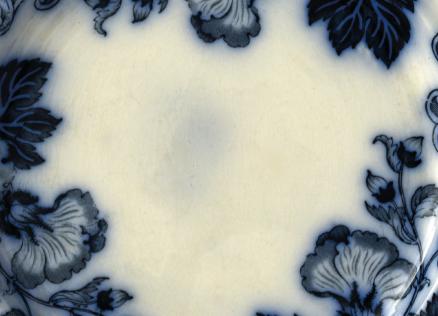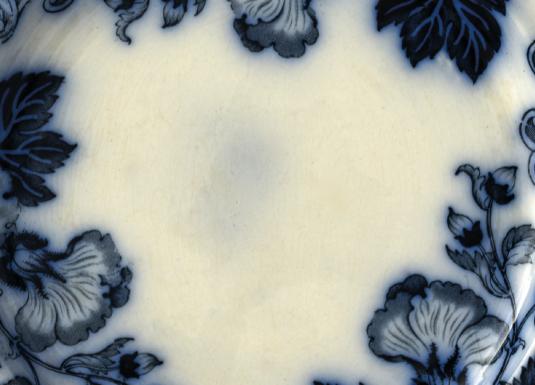From 1 June to 20 August 2024, the Art Museum RIGA BOURSE in Riga (Doma laukums 6) invites to visit an exhibition The Charm of Blue and White. British transferware in Latvian museums and private collections. 18th–21st centuries.
1 June – 20 August 2024
Art Museum RIGA BOURSE /
Great Exhibition Hall
Doma laukums 6, Riga
Media tour of exhibition on 30 May 2024 at 12.00
Registration of participants: 11.30–12.00
The exhibition provides an insight into the broad, original, and visually attractive field of applied decorative art, which the British themselves call English transfer-printed pottery or in an abbreviated form – as English transferware.
The items that can be viewed at the exposition have something in common in that they have been created from ceramics and that the pattern technique has been used for their decoration: the vessels have been decorated with printed pattern that has been mechanically transferred onto the surfaces of vessels using engraving or other graphics techniques.
This technology, which was already widely used in the late 18th century in England for decorating ceramics, allowed for the creation of magnificent, visually effective vessels in an incomparably faster and much cheaper way than before. The manufacture of English ceramics was thus facilitated to a previously unseen extent. In the 19th century, millions of examples of transferware were manufactured in the British Isles by English, Scottish, Welsh, and Northern Ireland companies, and were exported to all continents. The imported products also made manufacturers in other countries contemplate the use of similar technology, which facilitated the rapid development of the local ceramic fields in many countries, including Latvia.
It has been estimated that the total number of patterns used historically in the decoration of vessels by British manufacturers, exceeds 18 000. The diversity of these is quite unbelievable – starting from motifs acquired from Chinese porcelain and the Ancient World, and finishing with romantic landscapes, elegant pastoral scenes, flower and plant compositions, portrayals of animals and birds, as well as abstract geometric ornaments.
Transferware has already found its place in the collections of the most important world museums and has become a passion for many collectors. As a result, rich collections of such items have been created with serious research being undertaken on them. It is true that for a long time, especially outside of Great Britain, transferware was valued much lower than hand painted porcelain. This did not take into account the fact that printed motifs had been frequently created by outstanding artists of their time. This attitude has changed in the past half-century though, and nowadays most specialists recognize that, as in the evaluation of printed Rembrandt etchings, the number of copies does not, in any way, reduce the aesthetic qualities of a specific work.
The private collections of Dainis Bruģis and Agrita Tipāne form the core of the exhibition, which is supplemented by several hundred items from 22 different Latvian museums and National Library of Latvia in total. The Latvian National Museum of Art and the Museum of the History of Riga and Navigation are represented with a greater number of exhibits. A significant contribution to the exhibition has, however, been provided by other museums in Latvia as well, and includes the Cēsis History and Art Museum, which held the first exhibition dedicated to this theme in 2021–2022. The exhibition’s research catalogue, which is currently the only publication in Latvia dedicated to the broader topic of English transferware, also came out in 2022, published by the Cēsis Museum.
The exhibition has been created with the support of the State Culture Capital Foundation of Latvia.
Supported by:
State Culture Capital Foundation of Latvia
Co-operation partners:
Alūksne Museum, Bauska Museum, Cēsis History and Art Museum, Gulbene Municipality History and Art Museum, Jelgava History and Art Museum of Ģederts Eliass, Turaida Museum Reserve, Latvian Open-Air Ethnographic Museum, National Library of Latvia, Liepāja Museum, Limbaži Museum, Museum Riga Art Nouveau Centre, Pauls Stradiņš Medicine History Museum, Piebalga Museum Association Orisāre, Riga Porcelain Museum, Museum of the History of Riga and Navigation, Rundāle Palace Museum, Smiltene County Museum, Talsi District Museum, Tukums Museum, Valmiera Museum, Ventspils Museum
Exhibition creators:
Ina Līne, Dainis Bruģis, art scholars
Project manager:
Zane Lūse, Collection Manager of the Foreign Art Department /
Art Museum RIGA BOURSE /
Latvian National Museum of Art
Ph: (+371) 67 220 647,
E:
Team:
Valentīna Opolā, Ilana Pārstrauta, Baiba Uburģe, Laura Vilka, Anete Brakša /
Art Museum RIGA BOURSE /
Latvian National Museum of Art
Conservators:
Una Kastanovska, Anna Kozorovicka, Natalya Kurganova, Zane Tuča /
Art Museum RIGA BOURSE /
Latvian National Museum of Art
Exhibition construction:
Rūdolfs Cunskis, Kārlis Verners Baumanis /
Art Museum RIGA BOURSE /
Latvian National Museum of Art
Graphic design:
Kristīne Jansone, Visual Communication Specialist /
Art Museum RIGA BOURSE /
Latvian National Museum of Art
Education programme:
Vita Ozoliņa, Ieva Velberga, Nikola Rundāne, Curators of Education /
Art Museum RIGA BOURSE /
Latvian National Museum of Art
Exhibition communication:
Anete Brakša, Communication Specialist /
Art Museum RIGA BOURSE /
Latvian National Museum of Art
Special thanks to:
private collectors Dainis Bruģis, Agrita Tipāne, private individuals Gunda Dukure, Aigars Grīnbergs, Indra Liepa, Liesma Markova



